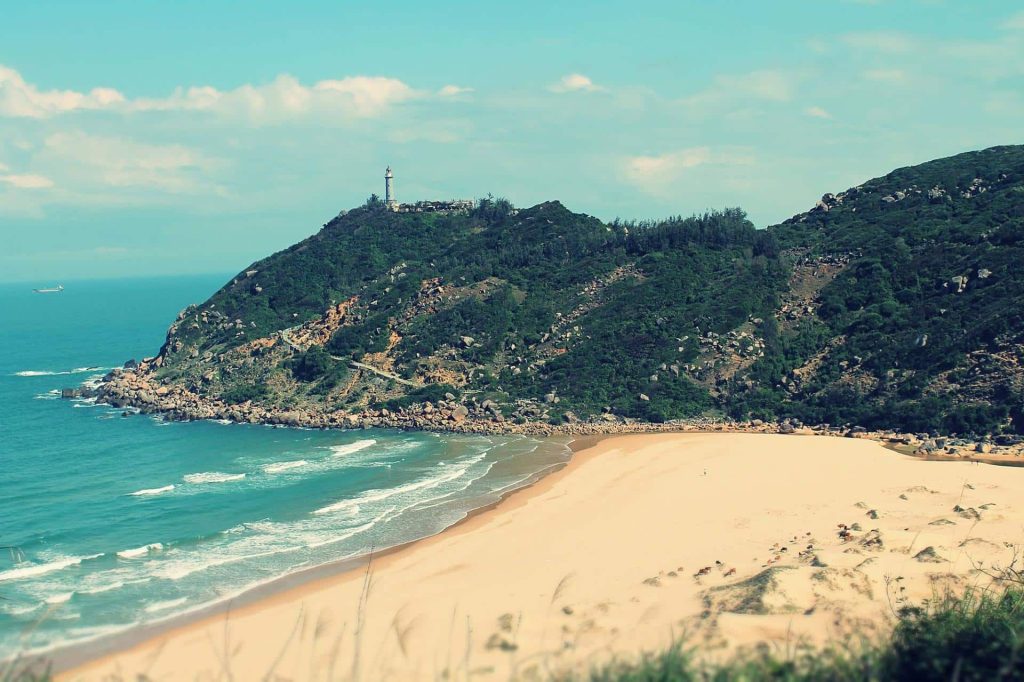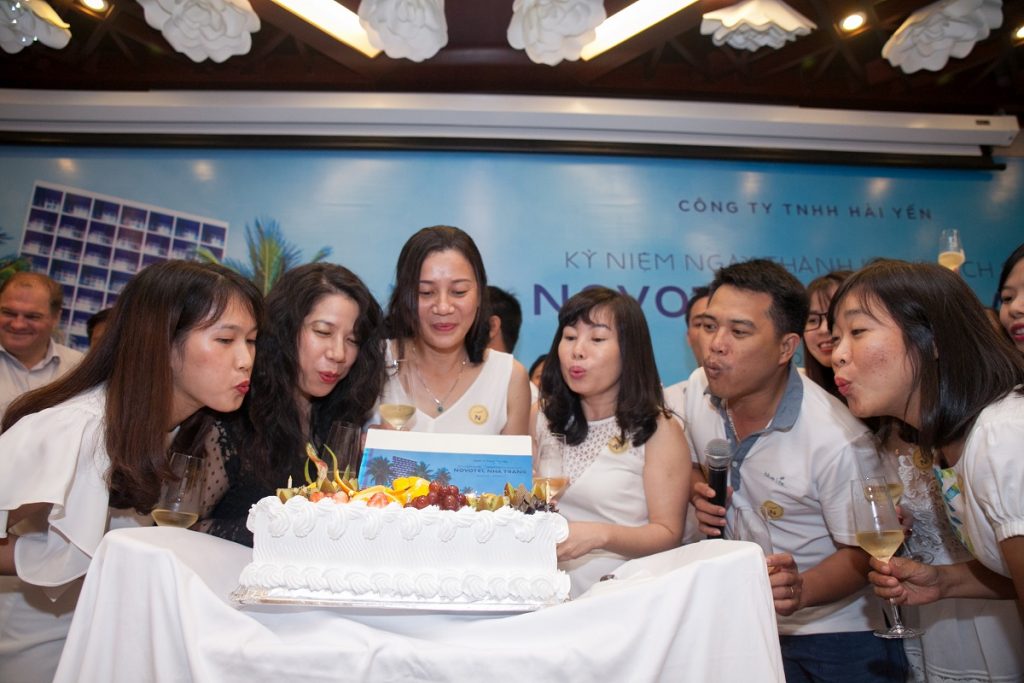Travel Professionals Identify 15 Luxury Travel Trends For 2016

Prisitine, unspoilt beaches in Tuy Hoa, Phu Yen, VIetnam
Travel Professionals Identify 15 Luxury Travel Trends For 2016 And Beyond
Doubling down on local
“Travelers want to be with locals,” said Jack Ezon, president of Ovation Vacations in New York. “They want to be immersed in a destintion. Instead of guides who know a lot of facts, they want insiders who can really give them the lowdown. Or they want a nightlife host who can take them to the coolest bars and nightspots and tell the story from their own perspective.”
Be an Expert
At The Nines Hotel in Portland, OR, director of sales and marketing Laura Van Daal said, “Everyone in the hotel is a concierge and a local expert. They are trained to listen to the specifics of what a guest likes or is looking for, because everyone wants a different experience. We have contacts all over the city, so we can get to visit the rare books department of Powell’s Books, or we can get people into the Nike or Adidas employee store where they can get great discounts.”
Milton Pedraza, CEO of The Luxury Institute, said, “It’s not just about getting a table at the best restaurant, but it might be getting the right table. There’s a popular restaurant in Paris where all the tourists are on the second floor and the locals are on the first floor. If an agent knows a concierge, he might be able to get the client to a first-floor table.”
Authentic, but maybe not too authentic
Authenticity can be taken too literally. Said Ezon, “You really have to be clear with clients about what they’re getting. When they say they want a ‘sense of place,’ that really means they want to be in a hotel they can use as a springboard from which to see their surroundings. If guests get to a ranch and there’s no air conditioning, they might not be happy.”
Personalization: It’s the little things that count
Personalization doesn’t have to be a big deal. Ezon said he had a couple going to Africa for a honeymoon. After a long week of travel, they arrived at their camp and entered their tent to find pictures of their family on the “walls” and their wedding song playing. “They couldn’t believe it,” said Ezon. “It’s the agent’s job to provide that kind of information to the people on the ground.”
Matteo Della Grazia, owner of tour operator Fuoritinerario — Discover Your Italy, said, “We are seeing increasing demand for local and authentic experiences that allow clients to create their own local product. For instance, they can work for a day at a top Tuscany vineyard with a wine- maker to create a personalized wine, which will then be aged, bottled, and shipped to them. We call it Adopt A Barrel. We have a similar program for perfume.”
Hip at the high end
Hotels brands like Ace prove that travelers will spend more to be around people and things they perceive as hip. Still, said Van Daal, while “hip and real luxury can go hand in hand, being hip is not enough. You still need great service to truly be luxury.”
Whimsical wandering
It may be a generational thing but there are travelers who like to arrive at their destination without any plans beyond their first hotel stay. Ezon, for example, has a couple spending $100,000 on their honeymoon and doing it day by day, consulting with him continuously about what to do next.
Speaking meaningfully
“Access is one thing,” said Susan Farewell of Farewell Travels, “but an experience that satisfies a greater sense of purpose is the ultimate luxury.” Farewell is putting together a trip for a family of five going to southeast Asia, for example, that will include an elephant encounter, though they are not interested in anything that exploits the animals for tourism. “They are interested in a non-profit ethical elephant experience, where they see the animals but are not riding them or enabling any exploitation of them.”
Unexpected pairings
Travelers are combining destinations and experiences that are very different from one another. Farewell is working on one trip where the couple is spending five days doing a cooking program in Tuscany and then moving up to Lake Garda for a few days of sailing lessons.
Fun with food
Everybody talks about cooking lessons or meeting the local chefs, but some want to go further. Farewell notes that in Ho Chi Minh City, you can take a Foodie Tour by Vespa, where a driver takes each traveler from one food venue to the next. It’s a high level of curated street food options, coffee houses, etc. The experience is off-the-charts fun but also informative and delicious.”
Della Grazia said some clients visit local homes where they cook and eat with the residents; sometimes those hosts act as local guides to explore the neighborhood.
Long-term trip planning
“I work with clients long term,” said Farewell, “seeing their travel needs in terms of five-year chunks. We develop a five-year travel plan for them, which we revisit every year. So I get questions like, ‘Where are we going this summer?’ They assume I have already thought it through for them based on their past trips, their kids’ ages, and the five-year plan we designed.”
Destination roulette
While everybody tries to figure out the “hot destinations,” sometimes it’s just random or based on a magazine article or news event, or even a shift in currency. Douglas Easton, managing partner at Celestielle Travel, said, “Maybe a new hotel will open or there’ll be an article in a travel magazine and suddenly bookings will come in. We had not a single Namibia booking last year and suddenly had four separate ones. That’s why you just have to be prepared for what comes up.”
Also, it’s long been known that even the wealthy like to get the best possible value in their vacations, and one way to do that is by staying on top of exchange rates with the dollar. Said Ezon, “If your client is going to spend $40,000 on a trip and there’s a big swing in the currency, they could save a third or more on that. That is why Europe has remained popular.”
Exotic emerges
Pedraza noted that younger travelers are heading for more exotic places, like Cambodia and Bali. “They have already been to the more traditional destinations so there is a real opportunity here.”
And Scott Wiseman, president of Cox & Kings, said, “Whether it’s requesting tickets to a sold-out baseball game in Japan, taking a motorcycle journey through Patagonia, textile shopping in remote India, or taking a private polo lesson in Argentina, today’s travelers are limited only by their imagination.”
Convenience is king
Luxury clients are flocking to buy ancillary services that make their travel experience easier. He Ezon said that over the past three years Ovation has had a 37.4% increase in ancillary travel products including: luggage shipping, airport greeters (to assist with connections, arrivals, and departures), and park guides (VIP guides in amusement parks to help deal with lines, logistics, etc.)
The human touch
“Even young people don’t just want to be digital beings,” said Pedraza. “They want to engage with other people—whether it’s tour guides, people on the street, or other travelers. It’s like when electricity was invented. You would flick the switch on and off because of the novelty. Now the novelty of digital has faded and people want emotional connections.”
It’s nice to share
The quality of sharing accommodations—whether it be Airbnb or sharing options introduced by hotel companies—is improving, said Pedraza. “This might lend itself to the local trend, as well, “because your sharing host might for a small fee become your local guide.”
Art is the new cuisine
While food has taken a central place in luxury travel, said Ezon, so too has art. “So many properties are recruiting an artist-in-residence and turning their public spaces into evolving galleries from local artists,” he noted, with revolving art exhibits. The new Faena Hotel in Miami Beach kicks up the art theme with a whole art district, art programs for guests, and a children’s art immersion experience where local artists inspire kids to create their own masterpieces. The Ritz-Carlton Toronto has an in-house artist who designs plates for the hotel’s restaurant and works with guests to design their own.

